공지사항
-
- '노란봉투'캠페인/국제연대..
- no chr.!
And somewhere here in my anti-war report you can see/hear the(more beautiful) live version:
http://blog.jinbo.net/CINA/?cid=11&pid=147
"Gloria Macapagal-Arroyo has really gone gaga. In her desperate attempt to quell the Filipino people’s anger against her corrupt and bankrupt regime, she has screwed up again by issuing Proclamation 1017, placing the entire nation under a state of national emergency." one wrotes today on Manila Indymedia Collective.
http://manila.indymedia.org/?action=newswire&parentview=6980
Meanwhile
Arroyo lifts state of emergency
Al-Jazeera reported today
Well, just let's see what comes next, what will bring the near future!
Of course when I will found more news I will update this stuff as soon as possible!... well, here the latest comes..
Today's(3.5) Manila Times:
INQ7.net:
Lifting of 1017 met with skepticism
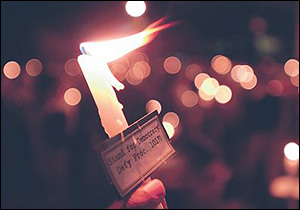
So, or..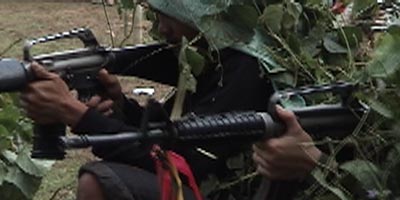
..so, the people will fight for their rights!!
Yesterday's IHT published following two articles:
Philippine Congress is new battleground
Philippines perseveres, with or without coup
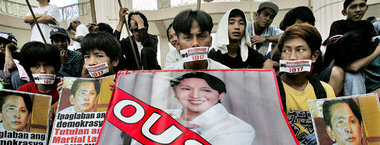
Manila, 3.1. Student protest against the Arroyo regime
And here...

LA(US), 2.28. Protest against the martial law in the Philippines
Today's Asia Times(HK) is publishing following story:
Philippines: Power, not Gloria
And finally check out the latest news by Manila Indymedia Collective
...aeh, (I think) it was already reported about it some hours ago here:
http://blog.jinbo.net/imc/?pid=31
..and I think until now there is nothing really new(??).
If you want to see how the S.K. government used(well, nowadays they might try to to the same..) to 'deal' with railway workers' strikes in the past, just watch the video here:
http://db.voiceofpeople.org/new/news_view.html?serial=4905&category=type10
(민중의소리, 2003)
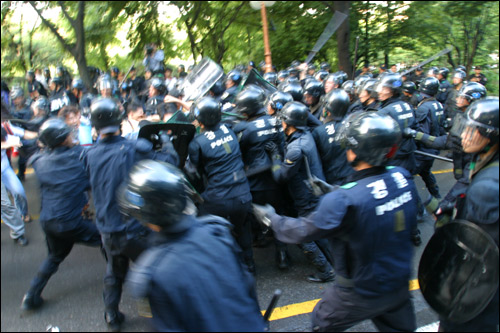
(source: 민중의소리, June 2003)

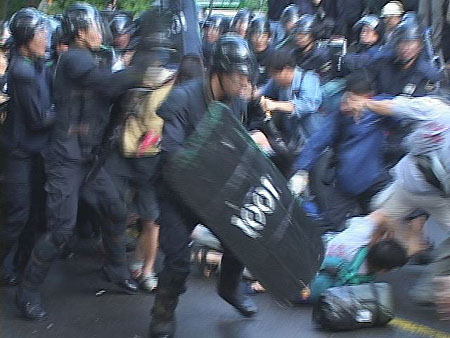
[source: base21/jinbonet(http://base21.jinbo.net/), June 2003]
...you can read here(3.2, K. Times):
Foreign Prisoners Cherish Freedom
Coming to Korea with baskets of aspiring dreams has turned into barrels of dreaded nightmares for some. For many foreigners, Korea is a place to experience a different culture and also a destination to earn a decent living. Mostly this is true, but for others these innocent expectations have been met with difficult despair. Guilty of illegal behavior or victims of injustice, there are foreigners who have been sent to Taejon Prison.
A total of about 4,000 inmates are serving time, including roughly 300 foreign prisoners from 45 different countries. The alleged crime in question is usually divided along national lines: Malaysians, credit card fraud; Vietnamese, theft; Mongolians, manslaughter; and Westerners, drugs. Compared to Koreans, foreigners typically receive harsher sentences for identical crimes, but of the foreigners Westerners usually get lighter sentences than those from elsewhere.
According to extensive correspondence and interesting interviews with a vast array of foreign prisoners, their experience is a sobering reminder for everyone to cherish freedom. Assigned to cells aligned like the cramped quarters of the slave ships of the 17th century, two inmates share a cell with living quarters measuring no more than 4’ by 7’.
These circumstances are just the beginning of their punishing ordeal. A typical day begins with the theme song from “The Good, The Bad and The Ugly” piped into cells at 6:30 a.m. Without pillows, they awake with stiff necks and rise from their unheated wooden floor. A few minutes later all the prisoners must be fully dressed for their “in cell” inspection.
At 7 a.m. they are served breakfast that more than one prisoner says “they just manage to eat.” The menu stays the same everyday ㅡ a glass of juice, one fried egg, and four slices of bread with jam. Lunch and dinner consists of rice served with some type of dish, like chicken curry or boiled zucchini.
To receive their three daily meals, each one is served through a hole in the concrete. With the end of breakfast, Korean radio is blared into cells until 9 p.m. to entertain the prisoners with basically the same halfdozen Korean folk songs everyday.
After breakfast the prisoners wait for their 30-minute exercise period, which they receive five days per week. During this time outside, they get one cold shower a day from Monday to Friday in the summer. Throughout the winter, they get one hot shower per week in a large communal shower room. Inmates must purchase towels, soap and toothpaste. However, once every few months they get a free bar of soap, a toothbrush, toothpaste and one roll of toilet paper.
For those inmates not working in textile factories, the rest of the days are mostly spent reading, writing or sleeping. This solitude is done to encourage them to “volunteer” to work in prison factories. If one is working in the factories, then more privileges are extended. For example, the workers receive “perks” such as activities on the weekend, one hour of exercise, a small wage and some snacks.
Faced with the choice of being isolated in a cell or to work in exchange for receiving bonuses, most people might wonder why a prisoner would choose not to work. According to one self-confessed murderer, the work is not difficult but foreign factory workers complain of discrimination at the hands of Korean workers. Moreover, the ones running the factories prefer not to have foreigners because of the language barrier when issuing work orders. In addition, based on prison regulations, convicted individuals sentenced for less than two years are not eligible for such labor.
If a prisoner is assigned to factories run by the prison, then they receive 20,000 won per month. If run by outsiders, the management gives 400,000 won for the monthly work . the prison keeps 50 percent and gives the remaining half to the inmate. Even though most foreigners ply their efforts in the lower-paying factory scenario, the prison has a 95 percent employment rate.
The inmates also get out of their cells for two hours twice a week to watch a Korean film one time and a foreign film the other. Periodically they will also get two hours out of the cell on Monday mornings when volunteers from KAIST go to teach Korean.
Although this training might make their life more bearable on the inside as the guards speak Korean, most foreigners consider this a senseless exercise since they will be deported and will probably never use the language again. English and Chinese courses are offered, but not to foreigners because a prison worker claims that “there are not enough resources.” Therefore, unless an inmate works at a factory, he will spend an average of 23.5 hours a day in what prisoners have referred to as “shoebox cells like a coffin.”
With these types of limitations and many prisoners “pleading that the Korean government give them more opportunities,” inmates look forward to contact with the outside world. They are allowed to make three-minute monitored phone calls after completing most of their sentence.
They also get four seven-minute visits a month with a guard present and through Plexiglas.
After all of this, the foreign prisoners are released to immigration officials upon the completion of their sentence. If they cannot afford to pay for a plane ticket home they can then spend up to six months in an immigration detention center before being banned from Korea for five years*.
This restriction likely does not influence their future plans as at last they are free. Free to never look back. Free to enjoy the cherished freedoms they lost.
http://times.hankooki.com/lpage/200603/kt2006030118162368040.htm
* hey mark: spaetestens mo. abend werden wir ja sehen, ob da was dran ist!!??..^^
Today's advertisement on naver:
Well, dream more!!
K. Crimson, 21st Century Schizoid Man
법무부
MINISTRY OF 'JUSTICE'
2006年..
..THE YEAR OF CONCENTRATED CRACKDOWN
"Ministry of Justice announces to regulate 3000 illegal aliens per month
The Ministry of Justice announced this year as the Year of Reducing Illegal Stays, and will deport, each month, 7000 who are illegally remaining in Korea despite continuing watch efforts. According to the Ministry, as of December 2005 there are approximately 180,000 illegal residents and the number is growing by 3000 more each month. To break down the nationalities of those who stay illegally, China tops with 44%, followed by Bangladeshi and the Philippines.
The Ministry maps out the course of gradually reducing illegal immigrants to 90,000 by the year 2008, as it proposes to enforce the announcement by tracking down 3000 violators per month while inducing 4000 to leave the country voluntarily. Hence the control will become tighter as the Ministry will operate ten joint task force teams of the Office of Immigration, the Prosecutors Office, and the Police in Seoul and its vicinity areas, and for the rest of the country the Ministry will run 10 offices with Immigration officers exclusively working on tracking down the violators."
Source: MWTV (This text will be a part of MWTV's next foreign language news program).
The following article by IHT/NYT presents exactly what I'm already saying since years: The S. Korean capitalist class can/will give a shit on re-unification! The sole thing what they want: MAXIMUM EXPLOITATION of the N.K. working class! (In the case of unification, of course, this kind of exploitation would not be possible anymore!! ...ae~ I guess, but who knows???)
"Not only are the wages the lowest in Northeast Asia, but independent labor unions are banned. 'Strikes?' Hwang replied dismissively in response to a reporter's question. Raising crossed arms, he said with a slight smile:
'Absolutely not.'"
For managers, a Korean paradise
By James Brooke The New York Times
MONDAY, FEBRUARY 27, 2006
http://www.iht.com/articles/2006/02/27/news/korea.php
Kaesong, North Korea In a cavernous factory floor here, where hundreds of North Korean women diligently cut and sewed women's jackets Monday, a South Korean businessman seemed to have found Korea's answer to China: wages at 26 cents an hour.
KCTU should read and learn from this!!!
Following articles were pubished in yesterday's(2.27) Guardian(UK)
Philippine congress stormed
Marines' revolt threatens Arroyo
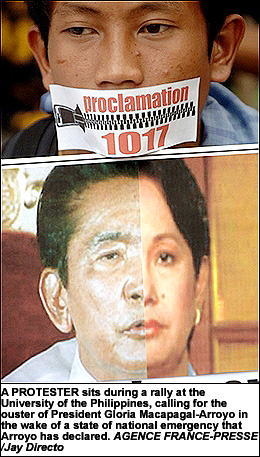
And here you can read more statements by(left-wing) political organisations in the Philippines:
Ang Bayan. Special Issue, February 27, 2006. Resist Gloria Arroyo's new fascist dictatorship
PS: As I know organisations such as NDF, MAKIBAKA(Nat. Movement of New Women) or MAKABAYAN(a youth org.) are 'just' parts of the legal network of the CPP. (Well, this is just a explanation, to a valuation!!)
And finally please check out the latest news on Manila Indymedia Collective
덧글 목록
관리 메뉴
본문
Hatte DGB im Wiedervereinigungsprozess etwas fuer solidaritaet gemacht?부가 정보
관리 메뉴
본문
Der DGB war einzig an den Immobilien der ehemaligen DDR Gewerkschaft interessiert. Ostdeutsche Kollegen, die sich wirkliche Gedanken ueber eine Alternative zum verkrusteten DGB machten, wurden gnadenlos an den Rand gedraengt.In ostdeutschen linken Kreisen, die in den Betrieben aktiv waren, hatte man keinerlei Illussionen in die neue Bluehende Zukunft. Man war sich sehr wohl darueber im Klaren, dass nur mittels hartem Kampf vor allem die konkurrenzfaehigen Arbeitsplaetze zu verteitigen waeren. Aber weder der DGB noch die sogenannten linken Parteien unterstuetzen dies. Ausser einigen voellig unbedeutenden Splittergruppen.
Letztlich gab es auch im Gewerkschaftsbereich keine unabhaengige Vereinigung, sondern schlicht eine Vereinnahmung der Aktivisten im Osten durch den DGB.
Wenn du willst kann ich spaeter mehr und detaillierter darueber schreiben.
Aeh... wer bist du...
부가 정보